As a digital marketing agency, we work with many e-commerce companies and witness firsthand the challenges they face.
The last few years have not been easy for most companies, whether they are 100% digital or sell their products in-store and online.
The COVID-19 crisis and other socio-political and economic events are at the root of many of the challenges currently facing the online business world.
In this article, we will discuss a few of these challenges and present some solutions that can help reduce their impact.
1. Supply Issues
All stages of the supply chain are currently being hit hard: labor shortages, lack of raw materials, delivery delays, etc.
For consumers, these problems are most evident when stores are out of stock and this inevitably leads to frustration. Shoppers may decide not to buy because their basket value isn’t high enough for free shipping or one of the key products they’re looking for isn’t available, ultimately leading to the whole basket being lost.
Possible solutions:
Besides making drastic changes to their suppliers, e-commerce companies have little control over this issue. That said, there are a few solutions that can be put in place to reassure customers and provide a great shopping experience, regardless.
1. Make pre-orders
Pre-ordering is an ideal marketing tactic to gauge the inventory needed to meet demand. July, a modern-looking air conditioning company, is offering its customers the opportunity to participate in a pre-order to ensure they have their air conditioner by the start of summer.
In addition, this strategy helps create a sense of urgency that drives consumers to take action quickly.
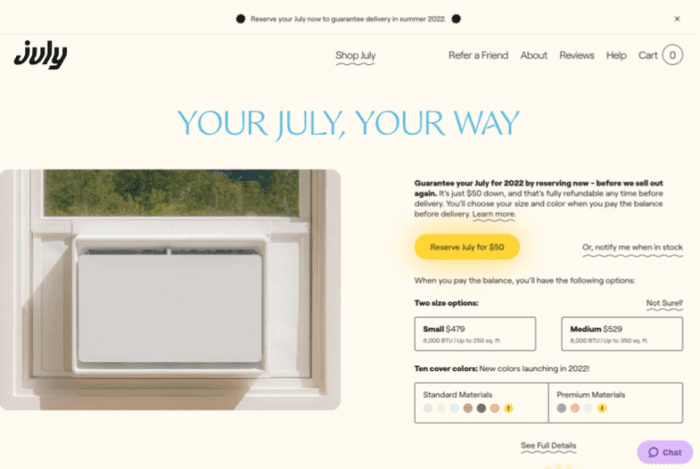
2. Actively inform your consumers about your inventory
It’s important to manage your consumers’ expectations. If your tech ecosystem allows it, notify your consumers on the product page of an item when stock is low. If the item is no longer available, clearly display it and add an estimated date of return to stock, like Structube does:
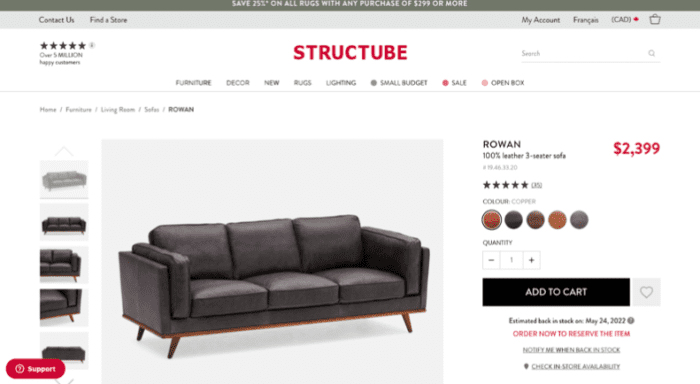
Montec, an outerwear company, offers consumers the possibility to register their email under a particular product when it is out of stock to be quickly informed when it will be available again.
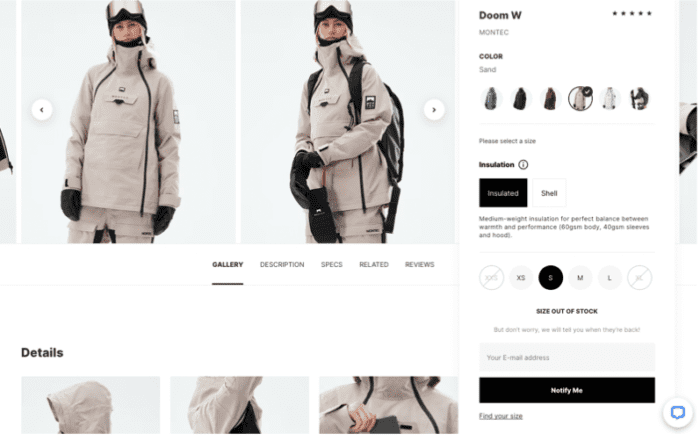
Sundays, on the other hand, has added a “ready to ship” section to their website. It’s a great way to quickly filter what’s currently available if a consumer needs a product as soon as possible.
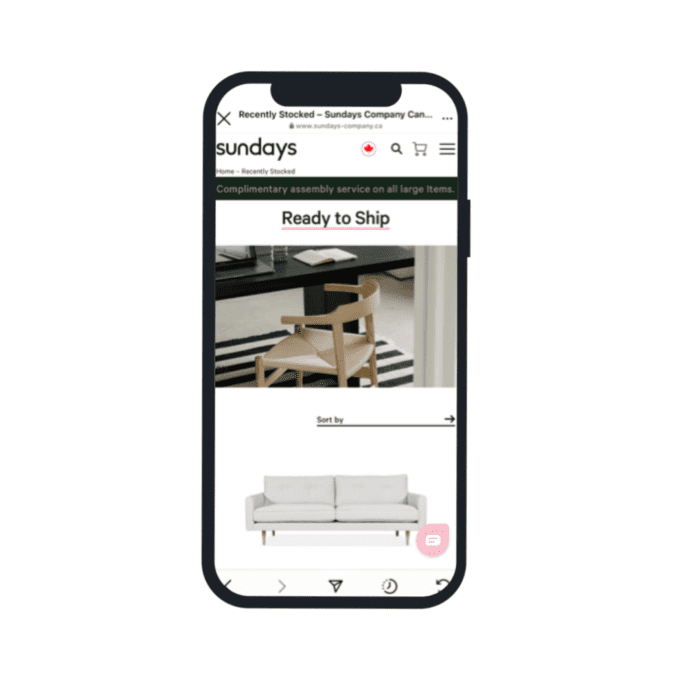
3. Stay Agile
Nothing is more frustrating as a consumer than when you click on an ad promoting a product and it’s out of stock. If you are running product ads, on Google Shopping for example, make sure your product feed is automatically updated. This way, unavailable products will not be featured in your campaigns.
2. Delivery Delays
The e-commerce craze combined with labor shortages is negatively affecting delivery times.
In addition, in recent years, consumer expectations in terms of shopping experience have only increased. The giant Amazon has a lot to do with its promised delivery time of 48 hours or less.
It’s important to address this issue with your customers early in the buying process.
Possible solutions:
1. Be transparent
Prevent your customers from having unpleasant surprises after placing their order on your site. Be sure to inform customers of potential delays when they complete their transaction.
See how Rove Concept, a furniture company, clearly warns its customers when they choose a delivery option. The company even explains the reason behind the delivery costs associated with its products.
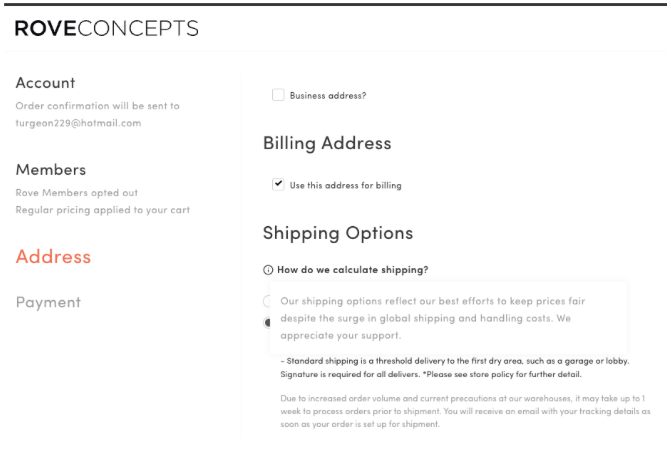
2. Keep your consumers in the loop
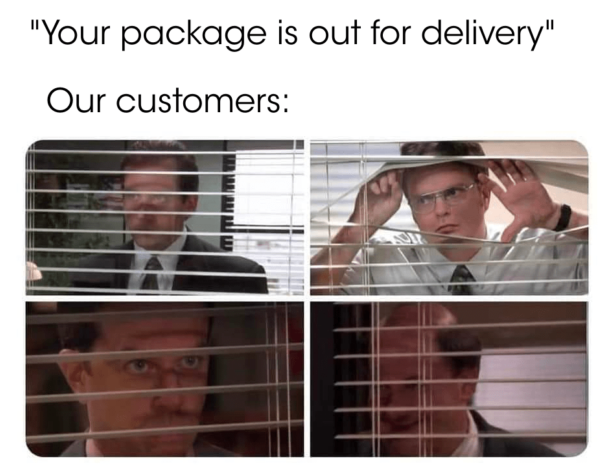
The majority of consumers identify with this meme. Receiving a package is often a joyful moment and many wait impatiently for their package at the door.
As a business, it’s important to effectively communicate updates to consumers regarding the delivery of their order. SMS can be a great way to notify your customers when a product is on its way.
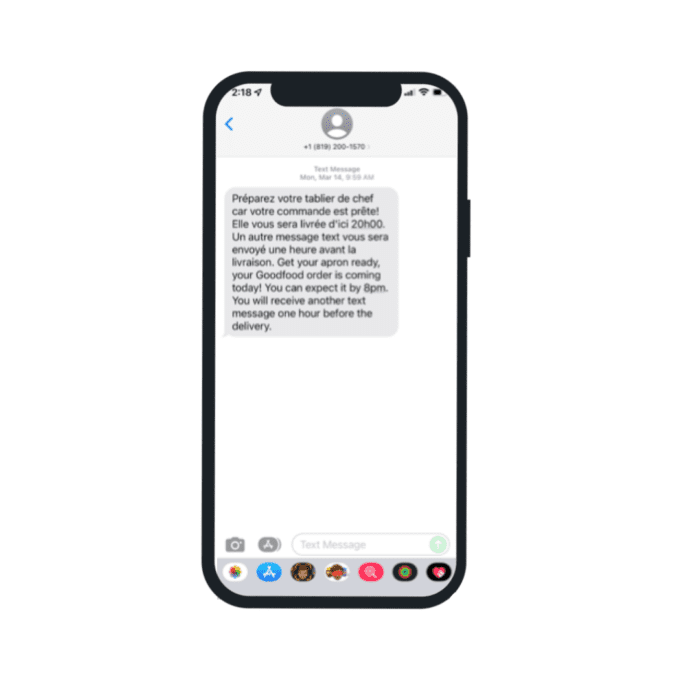
3. Encourage consumers to choose other delivery options
Logically, consumers will select the fastest delivery method right off the bat. That said, you can creatively encourage consumers to select other delivery options if they are not in a hurry to receive their product.
Here, Old Navy plays on shoppers’ heartstrings by humanizing the team that handles shipping to influence the consumer to choose slow delivery:
“We’ll still do our best to ship your purchase quickly, but our fulfillment teams would appreciate the extra few days.”
Old Navy
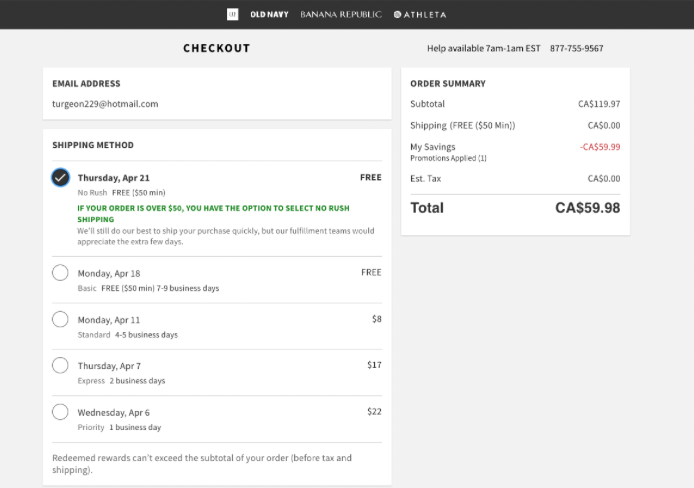
It would also be interesting to create an exclusive contest or offer a discount for people who choose this option.
3. Delivery costs
The price of oil and the cost of raw materials, among other factors, are driving up delivery costs for businesses.
For years, we’ve known that shipping costs are a major deterrent to people who purchase online. The majority of e-commerce companies offer free shipping to drive sales, but this increase in fees makes it more complex.
Possible solutions:
1. Increase the average basket size
Since e-commerce companies, especially SMBs, have little control over delivery costs, they may try to increase the average basket on their site.
A very popular way to do this is to suggest complementary products during the purchase. The international companies Zara and Adidas do this very well:
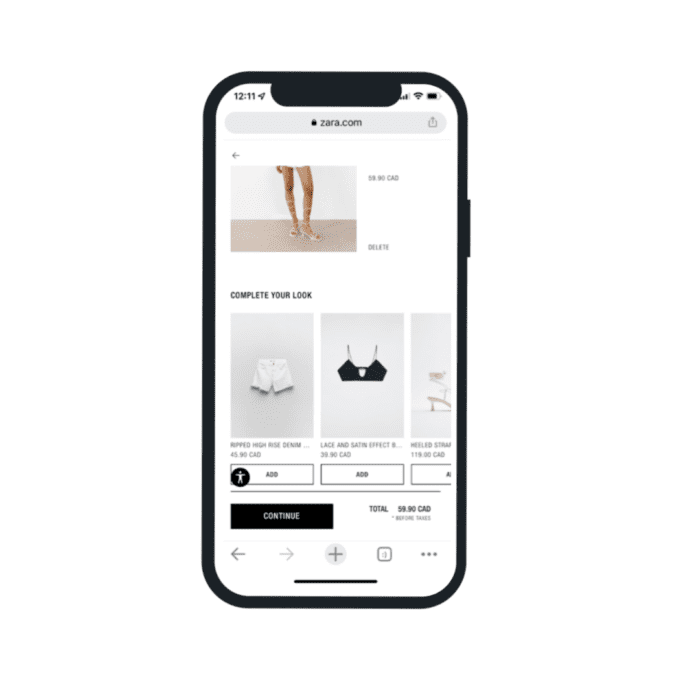
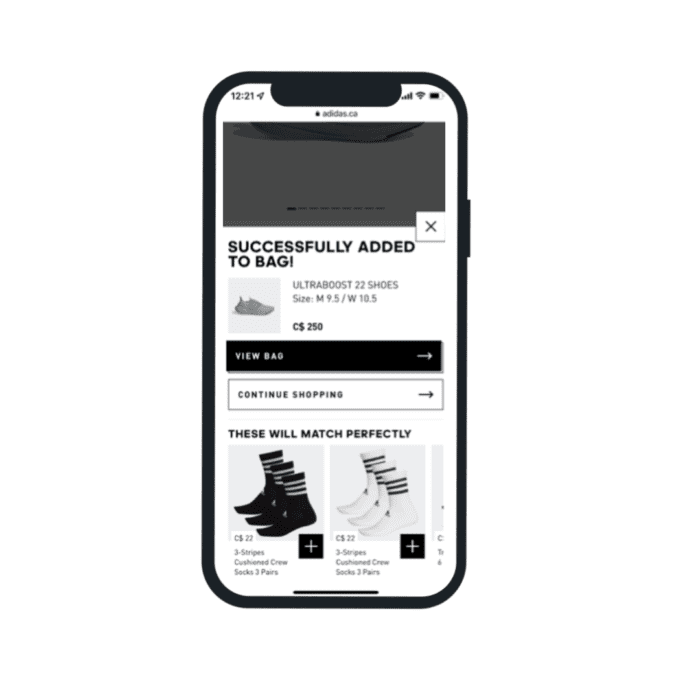
2. Focus on in-store collection
One drastic way to reduce shipping costs is to not ship anything at all. Offering the option to buy online and pick up in-store (or at your corporate headquarters) is a very popular way to bypass shipping.
The giant Simons not only offers its customers the option to pick up their purchase at the nearest store, but it offers double loyalty points to members who choose this option, it’s a win-win.
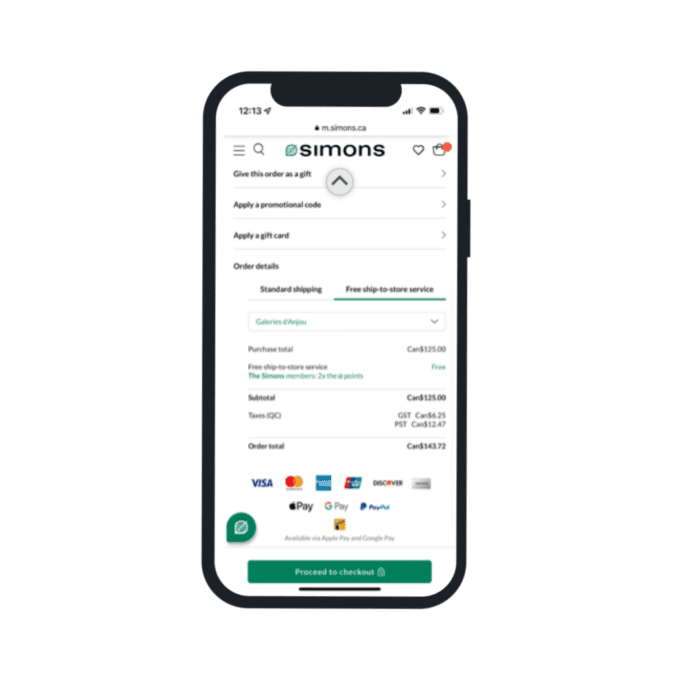
4. The competition is fierce
Many companies migrated their sales efforts to the Web during the pandemic and new technologies have made it easier to launch an online store. Both of these factors have contributed to an increase in the number of players on the Web. This makes it increasingly difficult to capture the attention of potential customers.
Possible solutions:
First, make sure you are aware of the different players active in your industry. Take a look at our article on how to do a competitive analysis here.
1. Stand out from the competition by leveraging your brand
Several factors influence a consumer’s choice when deciding to make a purchase. Some are rational and based on thorough research, others are more emotional.
Investing in brand marketing and awareness allows you to highlight the emotional attributes associated with your company, such as its history or personality. As a result, you create an attachment to your brand and when the time comes to take action, you will be the top-of-mind choice for consumers.
2. Invest in an outstanding user experience
The pre- and post-purchase experience can make the whole difference between you and your competitor.
First, make sure that the buying process on your website is simple and meets your consumers’ different needs. It is recommended to practice real user testing on site as an effective way to solve roadblocks. Here are some examples:
- Information relevant to each product is readily available (sizes, description, materials, etc.)
- A member of your team (or a chatbot) can answer questions quickly
- Navigation on your site is intuitive and simple
- The site is fast and adapted to different devices
Second, take the online shopping experience to another level: product customization, augmented reality, virtual fitting… the possibilities are nearly limitless.
5. Acquisition costs
When competition is strong, acquisition costs necessarily increase. In fact, lately, the cost per thousand impressions and the cost per click have been rising sharply. We have covered this topic extensively in this article, so feel free to refer to it.
Possible solutions:
1. Diversify your acquisition channels
While digital advertising is essential to any digital strategy, it is important to diversify your touch points. Investing in search engine optimization or affiliate marketing can bring customers to your site without paying per click.
Also, why not try to promote your business on less saturated channels than Google or Facebook. Platforms like Discord, Twitch, TikTok, Snapchat, Pinterest or Brave can be good options, depending on your target audience.
2. Keep in touch with your former clients
In marketing, everyone knows that it is much more profitable to retain a customer than to convert a new one. Email and SMS marketing is a great way to keep in touch with your customer base and (re)entice them to buy.
3. Increase your conversion rate
If acquisition costs are rising, it means that companies need to convert more customers to stay profitable. Conversion rate optimization is crucial in this case. Start by analyzing the customer experience on your website and try to identify which elements can negatively influence your conversion rate. To do this:
- Use heat maps to evaluate which elements attract (or don’t attract) the attention of your visitors
- Do a detailed analysis of your performance on Google Analytics
- Conduct user tests to gather feedback and comments
From this information, you can test different elements on your website to positively affect your conversion rate.
Challenges that are here to stay
Unfortunately, most experts agree, the challenges presented above will not be solved any time soon, let alone account for uncontrollable variables such as inflation, war or the instability of consumers caused by pandemic fatigue and other pressures. E-commerce companies must be creative to overcome these obstacles. If you need help implementing any of the above solutions, contact us and we’ll be happy to assist you.
Read it first:
Get new articles delivered to your inbox
ABOUT THE AUTHOR
Jeff Johnson
Vice-President of Paid Media @ Bloom




Share this: